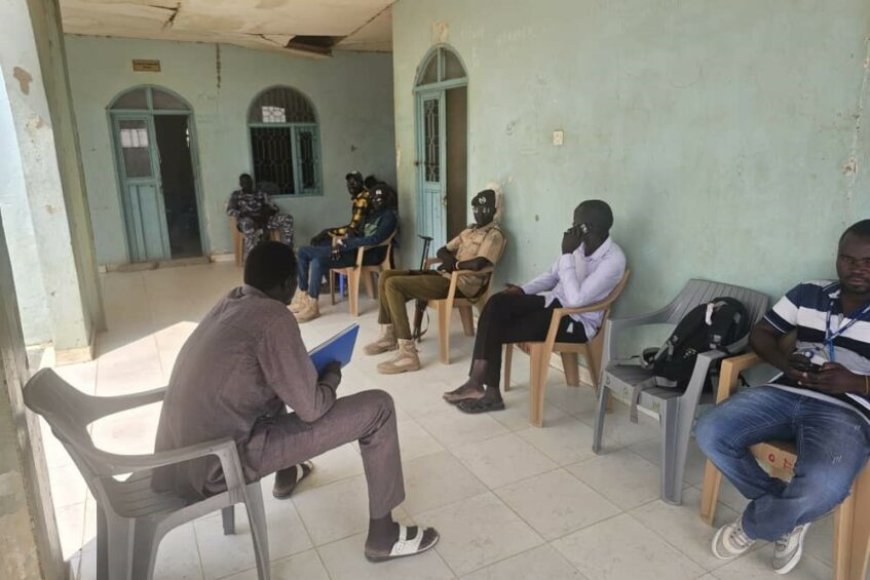Justice on Wheels: South Sudan’s Mobile Courts Bring Hope to Conflict Zones
South Sudan launches pioneering mobile courts to bring justice to conflict-hit areas, offering a new model for governance in war-torn regions.

Introduction – Justice in Motion
In a groundbreaking step toward rebuilding its fractured justice system, South Sudan has launched mobile court units designed to deliver legal services directly to communities devastated by years of civil war. This bold initiative—spearheaded by the judiciary in collaboration with international aid agencies—seeks to bring swift, localized justice to areas where conventional courts are either destroyed, understaffed, or inaccessible due to ongoing conflict.
The mobile courts, often set up in temporary tents or commandeered community halls, are staffed by judges, prosecutors, defense lawyers, and translators. They travel to regions where legal disputes and human rights violations often go unaddressed for years, especially in remote rural districts.
Why Mobile Courts Are Needed in South Sudan
South Sudan, the world’s youngest nation, has been plagued by conflict almost continuously since its independence in 2011. A fragile peace agreement exists, but many regions remain unstable. Roads are poor, infrastructure is minimal, and in many cases, entire court buildings have been destroyed during fighting.
Without functioning courts:
-
Land disputes escalate into violent clashes.
-
Gender-based violence cases often go unreported.
-
Criminal cases can linger indefinitely, with suspects languishing in makeshift detention facilities.
Human rights organizations have repeatedly warned that the absence of legal accountability fuels cycles of revenge, undermining peacebuilding efforts.
How the Mobile Court System Works
The new system operates like a judicial caravan, with court officials moving from one conflict-affected community to another on a scheduled rotation.
A typical mobile court session involves:
-
Advance notice given to the community about the court’s arrival.
-
Temporary setup of a courtroom—often in schools, municipal buildings, or even large tents.
-
Case hearings for both civil and criminal matters, focusing on the most urgent and long-pending cases.
-
Immediate verdicts in certain situations to prevent prolonged detention without trial.
-
Community engagement sessions explaining basic legal rights and procedures.
Unlike traditional courts, the mobile system is highly flexible, adapting to local cultural contexts while still following national laws.
Cases Being Addressed
According to early reports from South Sudan’s Ministry of Justice, mobile courts are prioritizing cases involving:
-
Homicide and violent assault in rural disputes.
-
Rape and sexual violence, often in internally displaced persons (IDP) camps.
-
Property and land ownership conflicts stemming from population displacement.
-
Theft and armed robbery cases linked to instability and economic hardship.
The system is also tackling child marriage cases and disputes involving customary law, balancing respect for tradition with the enforcement of human rights standards.
Impact on Communities
For many villagers, this is the first time they have seen a functioning court in years. Local testimonies suggest the mobile courts are:
-
Reducing backlog by clearing dozens of cases in days rather than months.
-
Restoring faith in the legal system by showing that justice can reach everyone.
-
Improving safety by deterring would-be offenders.
A community elder in Jonglei State told local media, “For too long, disputes here were settled with guns. Now we have another way.”
Challenges Facing the Initiative
While promising, the program is far from free of obstacles:
-
Security Risks: Judges and lawyers must often travel through volatile areas without guaranteed protection.
-
Funding Limitations: International donors have provided initial support, but sustaining the program will require long-term investment.
-
Logistical Issues: Poor roads and seasonal flooding can delay court visits.
-
Legal Awareness: Many citizens are unfamiliar with formal legal systems and may be hesitant to participate.
Global Relevance – A Model for Other War-Torn States?
South Sudan’s mobile court experiment is drawing attention from global humanitarian and legal reform organizations. Similar models have been trialed in Afghanistan, the Democratic Republic of Congo, and parts of the Pacific Islands, but South Sudan’s approach—focusing heavily on community participation and rights education—may offer a new blueprint for countries emerging from prolonged conflict.
Experts suggest that if South Sudan can sustain and expand the program, it could serve as a benchmark for post-conflict legal restoration worldwide.
Balancing Customary and Formal Law
One of the unique aspects of the mobile courts is their integration of customary law practices. In South Sudan, traditional dispute resolution remains central to community life. By including respected chiefs and elders as witnesses or advisors during trials, the courts bridge the gap between modern legal frameworks and centuries-old local traditions.
This hybrid approach helps ensure that verdicts are both legally binding and socially acceptable, reducing the risk of community resistance.
The Road Ahead
Officials hope to expand the mobile court program beyond the initial pilot regions, aiming to cover all ten states within the next three years. Key goals include:
-
Recruiting more judges and legal staff trained to work in challenging conditions.
-
Upgrading mobile court facilities with better transportation and communications equipment.
-
Building permanent regional courtrooms in areas where security and stability improve.
If successful, this initiative could dramatically improve access to justice for millions, helping South Sudan transition from fragile peace to lasting stability.
Conclusion – Justice Without Borders
The launch of mobile courts in South Sudan marks a turning point in the country’s struggle for justice. In a land where war has shattered both trust and infrastructure, the ability of a court to come to the people—rather than forcing them to risk travel to distant cities—signals hope.
It is a reminder that even in the most war-torn corners of the world, justice does not have to be stationary. It can move, adapt, and most importantly, reach those who have been left behind for far too long.








